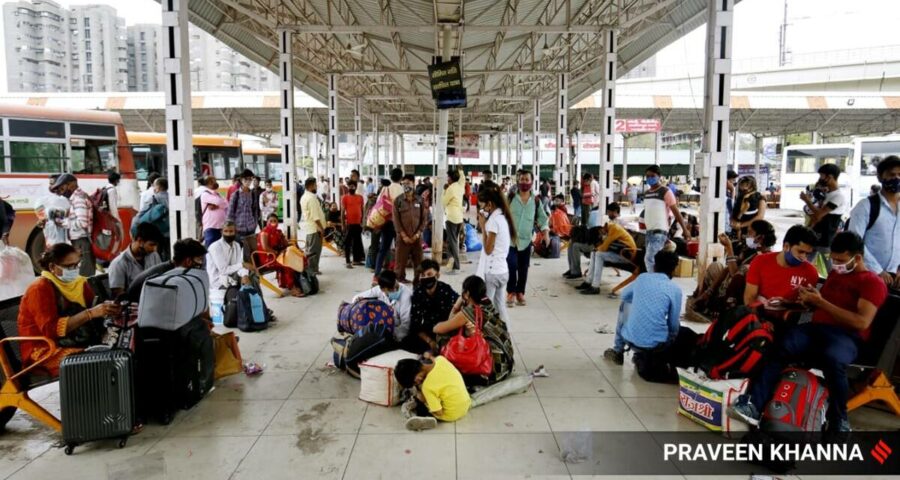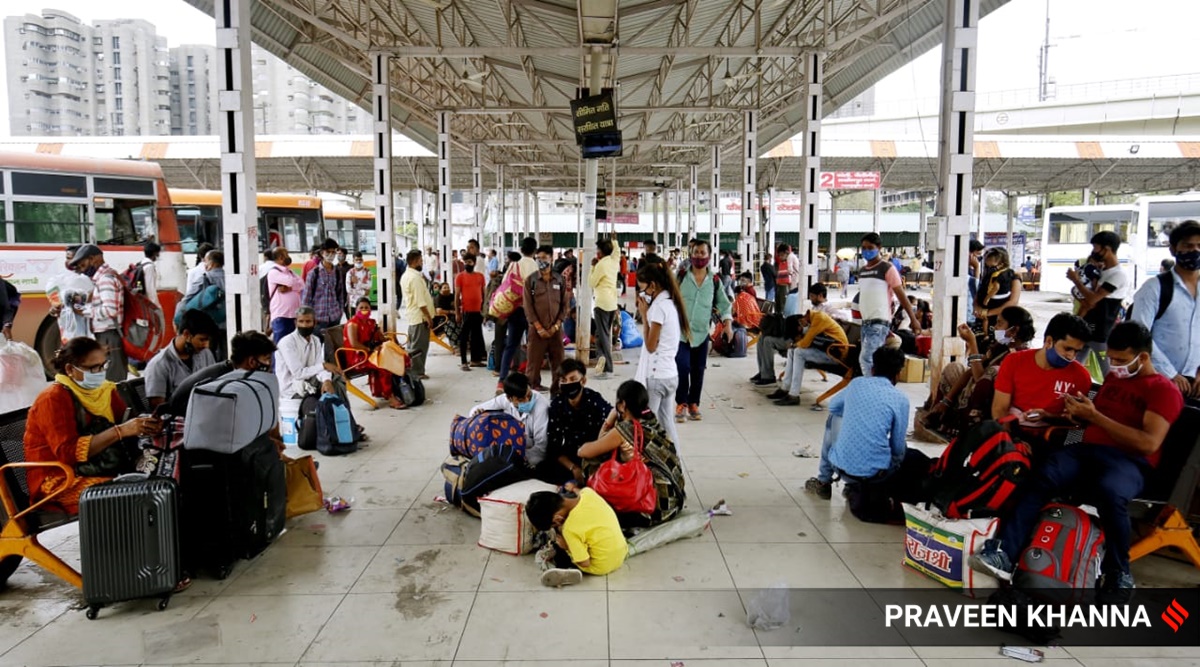It is painful to see that migrants are still not being prioritised for vaccination drives even when specialised drives for various age groups have started.
As a preventive measure against the COVID-19 pandemic in India, the Indian government imposed a nationwide 21-day lockdown on March 23, 2020, restricting the movement of its entire population of 1.38 crore. The nationwide lockdown continued until May 3, after which it was extended with conditional relaxations until May 31. The economy slowly started reverting with Unlock 1.0 being announced on June 1. Today, almost a year later, COVID-19 vaccines are being rolled out across the nation. Nearly 105 million Indians have been vaccinated so far. Priorities for vaccination in India have been based on occupation, age and health conditions. Being a dynamic community with no specific definitions based on any criteria, migrants have been dropped from the priority list for vaccination. When Prime Minister Narendra Modi declared “Teeka Utsav” from April 11-14 across the nation’s healthcare centres, apartment complexes, residential colonies, traditional halls, workplaces and more, the focus group for vaccinations were individuals over the age of 45, not migrants. Even when the economy thrives on the value of their essential services, why are migrants being kept off the priority list?
Even though we are gradually returning to the “new normal”, the distressing images of hungry migrant workers walking back to their homes with small children will remain in our minds. When factories and workplaces shut down, and a lockdown was imposed, millions of migrant workers lost their jobs, forcing them and their families to go hungry. With no jobs, no money, and a bleak future ahead of them, they were seen walking or bicycling for hundreds of kilometres to return to their hometowns. Many of them were even arrested for breaking the lockdown, and some died from dehydration or road crashes. It was the second-largest population displacement since Partition. The worst-hit class of people during the pandemic were the “vulnerable circular migrants”. They are “vulnerable” because of their weak position in the job market and “circular” because they seasonally move between their urban workplaces and their rural hometowns. Such migrants work in construction sites or in small factories or as rickshaw pullers in the city, but when such employment avenues dwindle, they go back to their rural hometowns. They are often denied adequate healthcare, nutrition, housing as well as sanitation facilities as the majority of them operate informally. They come from rural backgrounds, but live inside cities for work most of the year. The majority have no savings and reside in broken-down houses, shut down factories, dormitories or chawls.
Migrants contribute significantly to India’s GDP. Almost 90 per cent of Indians work in the informal sector, 75 per cent of whom are migrants, while vulnerable circular migrants manage most of the essential services. As of 2020, India has approximately 600 million internal migrants. The COVID-19 crisis displaced nearly 200 million migrants, of which 140 million had migrated to make a living. Family members who migrate with the breadwinner accounted for the rest of the migrant population.
Many schemes were formulated by the Indian government for the migrant population. Soon after the nationwide lockdown was announced in late March 2020, Finance Minister Nirmala Sitharaman announced a Rs 1.7 lakh crore ($24 billion) spending plan for the poor which consisted of cash transfers and other measures to ensure food security. The average daily wages under the MGNREGA were increased to Rs 202 from the earlier Rs 182. Nearly Rs 1,000 crore from the PM CARES Fund was allocated for the support of migrant workers. Later on, free foodgrains for 80 million migrant workers were also announced by the FM. Though it seems that the government did much for the migrants and their families, only some of them could avail the intended welfare. It was only on May 26, 2020, after the Supreme Court admitted that the migrants’ issues had not been addressed and that there had been “inadequacies and certain lapses” on the part of the governments that it requested the central government and states to provide stranded migrant workers with free food, shelter, and transportation. Only in the last week of May last year were the state governments finally permitted to operate buses for stranded migrants. Conditions in the buses were generally poor, with social distancing being impossible due to overcrowding and higher fares being charged than promised.
Some of the migrants were unable to benefit from the food security schemes as promised by the government through its public distribution system. This was because ration cards were area-specific, required registration, and because fair-price stores were largely inaccessible during the lockdown. Although One Nation, One Ration Card permitted migrant workers to obtain free foodgrain anywhere, very few knew of the scheme.
Although the Centre issued an order instructing landlords not to demand rent and employers to pay wages without deduction during the lockdown period, the order regarding payment of wages was later withdrawn. The Supreme Court denied a plea requiring payment of the minimum wage, as labourers had already been supplied with free food at the relief camps.
While vaccinations have helped reduce COVID-19 caseloads, the country fears another lockdown situation and closure of borders between states just like the previous year due to growing COVID-19 cases. It is painful to see that migrants are still not being prioritised for vaccination drives even when specialised drives for various age groups have started. It is true that the sick and the elderly need to be vaccinated first, and this might take another year, but the migrants should not be made to wait until then. They were the most affected during the lockdown. Most of them live on meagre jobs they do in the cities every day. Without being vaccinated, they will not be able to take up jobs. Developmental indicators such as the health and education of migrant families would decrease dramatically if they are unable to come back for work. They will never be able to survive this situation without an adequate support system. Our failure to prioritise their vaccination will lead the country to a major economic crisis, with not just low productivity and increasing unemployment, but also a breakdown of the critical but informal services sector.
This column first appeared in the print edition on April 22, 2021 under the title ‘Putting migrants first’. Rajan is chairman, International Institute of Migration and Development (IIMAD), Kerala; Tennyson is research associate, IIMAD
Source: Read Full Article


